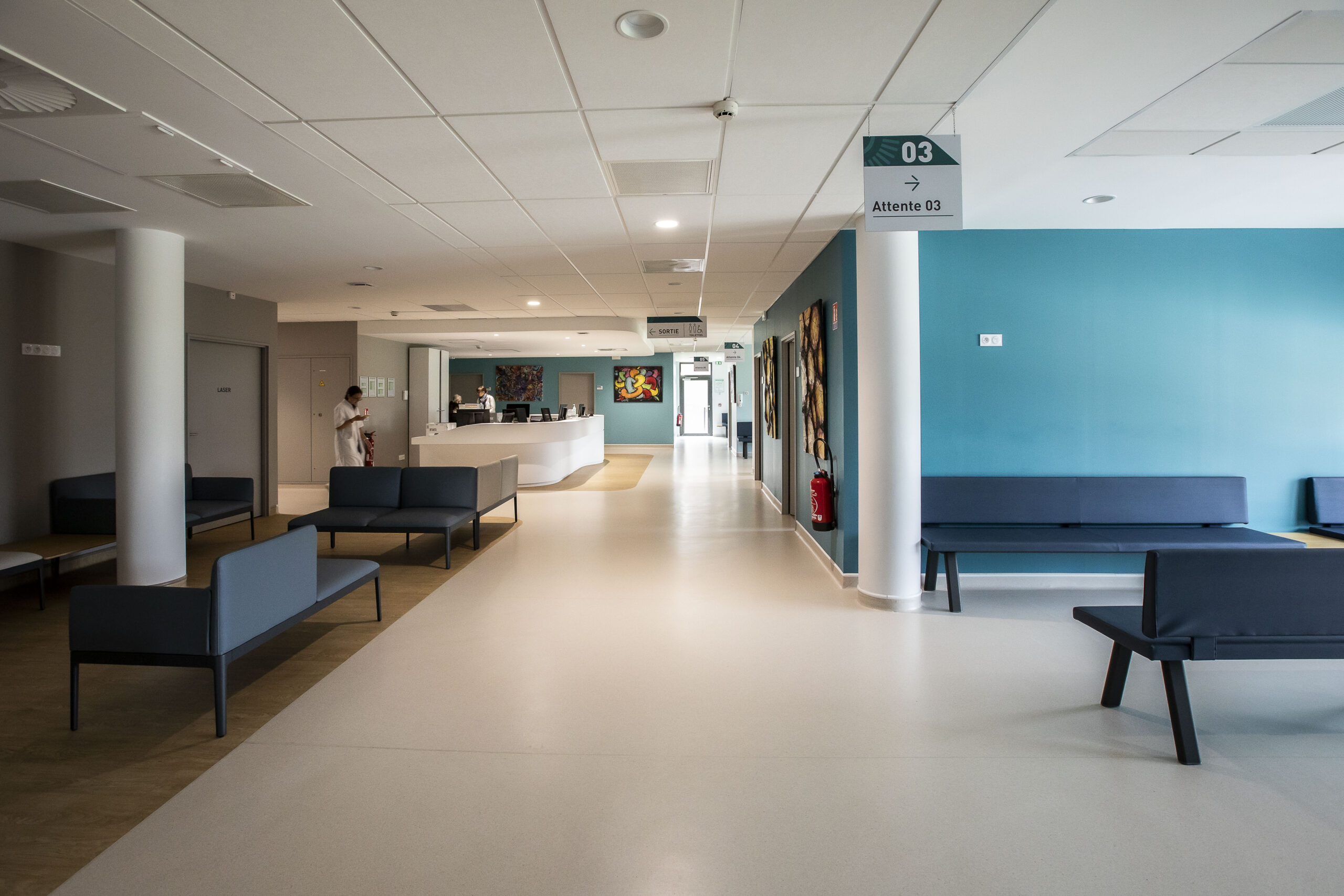Home > The center > Patient pathway
All stages of your patient journey or your operative journey
Your patient journey explained in just a few steps
1- Making an appointment
By phone at 05 55 45 44 60 or online.
Submit your administrative information and requests (date of birth, name, surname, medical history, reason for consultation).
A reminder text will be sent to you before your appointment.
Be careful on the day of your appointment, your pupils may be dilated. Since vision is affected, it is not recommended to not drive after the examination. It is best to come with or use another means of transportation.
2 • Welcome and registration
• Please arrive at the main level reception 30 min before your ophthalmologist appointment (for exams) or at the time indicated on your exam summons.
• On arrival, go to the main reception.
• Our teams will register you, think well to present your ID card/ passport/ family book, your vital card and mutual card.
3 • Pre-consultation with a specialist orthoptist or technician (if necessary)
• Preliminary examinations (visual acuity examination, intraocular pressure measurement, orthoptic assessment, etc.)
• Pupillary dilation if necessary (wait 15 to 30 minutes before consultation).
4 • Consultation with ophthalmology
- Analysis of preliminary test results.
- Clinical examination:
- Observation of the fundus if necessary.
- Detection of possible pathologies (glaucoma, cataract, AMD, etc.).
- Prescription of glasses or lenses if needed.
- Decision on further examinations or surgical procedures if necessary.
5 • Additional examinations may be requested if necessary
- OCT (optical coherence tomography), visual field, angiography, corneal topography, etc.
- Performed by a specialist orthoptist or technician.
6 • Debrief and order, follow-up planning (if necessary)
- The ophthalmologist explains the results and possible treatments.
- Delivery of prescription for optical correction, eye drops, or other treatments.
- Prescribing surgery (cataract, refractive surgery, etc.) if necessary.
- Make an appointment for a later check, depending on the diagnosis.
- Organization of a surgical intervention if necessary, with explanation of the pre- and post-operative protocol.
7 • Gestion administrative de fin de consultation
- The ophthalmologist explains the results and possible treatments.
- Delivery of prescription for optical correction, eye drops, or other treatments.
- Prescribing surgery (cataract, refractive surgery, etc.) if necessary.
- Make an appointment for a later check, depending on the diagnosis.
- Organization of a surgical intervention if necessary, with explanation of the pre- and post-operative protocol.
An ambulatory passport will be provided to you when planning your intervention
Your operating history
1• Before your operation
Pre-admission procedures
They must be completed as soon as possible either:
• To the coordination office located at Level 0 from 7:30 am to 5:45 pm (Take a ticket).
Your essential documents:
• Identification document (CNI or Passport or Family Book);
• Valid mutual insurance card;
• Vital card
• For minor patients, parental consent from both parents.
2• Anesthesia consultation
Anesthesia Bureau – Level 0
Your essential documents :
– Last valid prescription
– Additional tests and examinations (if requested)
3• Consultation with the surgeon
Office of your ophthalmologist – Level 0
Your essential documents:
• Letter from your doctor
4• Within 24 to 48 hours prior to your intervention
A nurse from the department will call you to tell you your time of
convocation and instructions to follow (fasting before your surgery, shower +
shampoo the day before, … ).
If not, contact the outpatient service at 05 55 45 48 15
from 9:00 a.m. to 6:30 p.m. Monday to Friday.
5• The day of your operation
When you arrive
Report to General Level 0.
The team will inform the person accompanying you of your departure time.
Documents required for your coverage:
- The “Trusted Person Designation, Advance Instructions and
consent to the Ambulatory care route” completed and signed; - The completed “anesthesia consent” form;
- The completed and signed SFO (pink) fact sheet;
- Any other documents requested by your surgeon or anaesthetist;
- Administrative documents received at pre-admission completed and signed
When you leave
Medical
You can leave the hospital with the agreement of your anaesthetist and surgeon. However, the decision to keep you in hospital may be taken if your condition so requires.
You must leave the clinic accompanied and do not drive for at least 48 hours.

